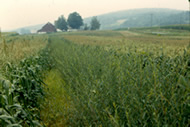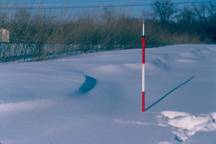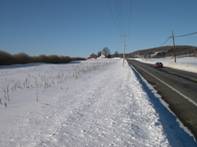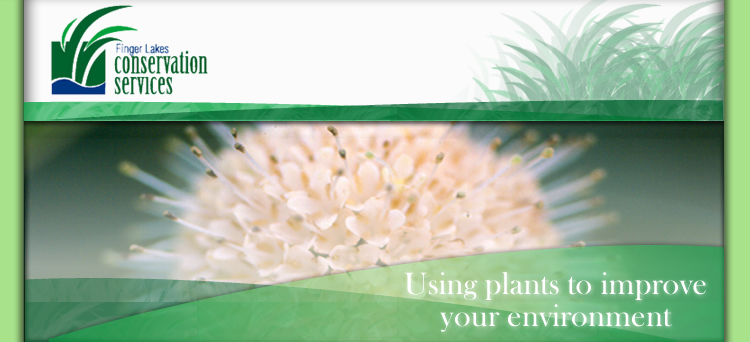Finger Lakes Conservation
Services has experience with:
LIVING
SNOW FENCE, WIND PROTECTION; DUST, NOISE AND SIGHT BARRIERS
SNOW DRIFT CONTROL AND ROAD SAFETY
CORPORATE AND SCHOOL CAMPUSES, RURAL PROPERTIES
FARMSTEAD AND LIVESTOCK PROTECTION
WINTER FEED CONVERSION IMPROVEMENT
ENERGY, LABOR, AND EQUIPMENT SAVINGS
PRIVACY ENHANCEMENT
QUALITY OF LIFE



FOR ADDITIONAL ENERGY SAVINGS:
THINK OUTSIDE THE “BOX”!!
Are you spending all of your time looking
at and in your building to find energy savings? If so, I would
like to suggest that you turn around and check outside- beyond
the walls. There are energy savings to be had by understanding
the role of vegetation around your home, school, or business
structures- then acting on the potential. The energy savings
are substantial, and typically outlive the lifespan of “energy efficient” furnaces,
refrigerators and water heaters.
Homeowners are guided by utility companies, appliance manufacturers,
insulation and HVAC installers, and government to save energy
in their homes and vehicles. This is all good and alert citizens
are following up on these opportunities to cut down on energy
use. But why is there so little discussion about using plants
to modify the environment around homes and buildings? According
to USDA literature there is another 10 to 15 percent energy savings
that we are basically throwing away by poor choices or lack of
forethought and action outside our heated and cooled buildings.
Here are the basics:
Wind
The effects of cold temperatures are magnified
by even moderate wind. We know this about our own bodies and
make clothing choices accordingly, but we ignore this when
it comes to our homes! Most cold winter winds come from the
north and west. The right trees and shrubs, if properly placed,
can dramatically slow wind speeds to reduce air infiltration
into our less-than-perfect structures. Oh, but won’t
that take too long to grow? If we choose the right species
and manage them correctly, we can start to make a difference
within five years. The best time to start this was 15 years
ago, but the next best time is now.
Shade/Sun
While almost everyone understands the term “shade tree”,
fundamental mistakes are often made when planting trees around
our structures. We plant the wrong trees in the wrong places.
We want shade in the summer, but we want maximum sun in the winter!
This means that evergreens and even trees and shrubs that drop
their leaves late in the fall should be planted so they will
not shade the structure during the heating season. This typically
means they are planted from the east around the north to the
west of the building, leaving the south side exposed to direct
sunlight.
But we want summer shade! Right, but exactly where do we want
it? The primary areas are on the east and the west sides of the
house. The sun makes an arc across the sky and is high during
mid-day so that it is shining DOWN on the roof during the hottest
part of the day. During morning and evening it is shining at
the roof and east and west sides of the home respectively. Providing
shade there limits the radiant heating of the house.
So, it follows that trees and shrubs with dense branching and
heavy shade should be concentrated to the east and west of the
structure, while trees with lighter shade, more open canopies
and relatively early leaf drop should go to the south.
Snow
In areas where snowfall and winter winds are significant, we
can reduce or eliminate drifting around structures, work areas,
and roads. This is an added benefit of the windbreak that comes
along essentially free of charge. Snow removal costs and effort
will be reduced, and winter safety will be improved. Placement
and/or design of the windbreak may be adjusted to assure that
we do not trap extra snow where it is not wanted. Specialized
windbreaks called Living Snow Fences are designed
primarily to trap snow and stop drifting.





